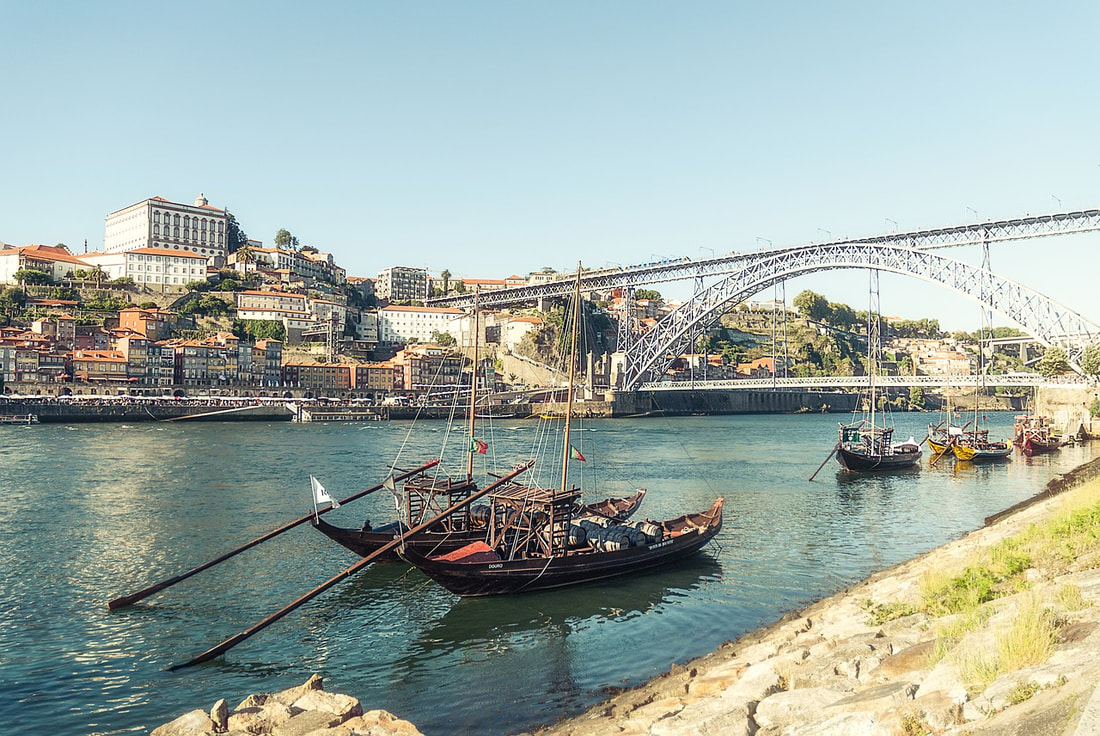|
River cruises are rich in experiences, from culture, history and culinary to gorgeous scenery. A cruise through the Douro River valley is no different, though this river valley is truly unique from any other European river. Approximately 557 miles long, the river runs through both Spain and Portugal. The majority of the Douro is in Spain - the most navigable portion is in Portugal. While the river has long been a form of transport, it wasn’t always easy. The five dams along this portion have tamed the river to make it more navigable – and calmer – thus the growth of cruises in this lovely area. You should consider a Douro River cruise. Here are 6 reasons why. MAGNIFICENT LANDSCAPES Cruising on the Douro takes place during the day, giving you ample opportunity to soak in the magnificent landscapes – a deep carved valley with steep granite slopes, terraced hills filled with vineyards, castles and charming native farms. Off the ship excursions offer many other opportunities to experience Portugal's beauty, including a visit Douro International Natural Park, an under the radar vast natural preserve on the Spanish border refuge for endangered birds. CHARMING TOWNS AND VILLAGES Few towns lie directly on the river, thus the itinerary includes visits to a number of sleepy villages and charming towns a few miles from the river where you can visit monasteries from the Roman era, see beautiful religious architecture and walk through quaint centuries old villages. Of special note is Santuário de Nossa Senhora dos Remédios (Sanctuary of Our Lady of Remedies) in Lamego, one of Portugal’s most captivating religious sites (18th century pilgrimage church). A visit to Freixo de Espada à Cinta, one of Portugal’s most remote towns is in store for those who choose to visit the Natural Park. A town on the river that is surely fun, Peso da Regua, is the hub for transporting barrels of port wine down the river. PORTO Porto is where river cruises start and end and is Portugal’s second largest city. One of the oldest cities in Europe, Porto’s city center is also a UNESCO site. It has been inhabited by different groups throughout the ages, from Celtic people to Romans, Moors and more, making it an interesting melting pot of people and architecture. Porto has a number of historical sites of interest, including the Livraria Lello, a beautiful bookstore founded in 1906. It now requires you to purchase a ticket to see the interior, having become a very popular site. UNESCO HERITAGE SITES This itinerary is filled with UNESCO sites. To start, the Douro Valley and the city of Porto. The old city of Salamanca (above), an ancient university town dating back to the 3rd century B.C is a must see for its remarkable Roman, Gothic, Renaissance and Baroque style buildings. The UNESCO town of Guimaraes has the San Miguel church, built in the 13th century and is linked to the foundation of the Portuguese Kingdom. And not to forget the Côa Valley Archeological Park, an open air gallery of Paleolithic rock art 25,000 years old. PORTUGUESE AND PORT WINE The Douro Valley is one of the, if not the oldest demarcated wine regions in world - 2000+ years old. Wine was introduced to the region by the Tartessians and over the centuries the Phoenicians, Celts, Greeks and Romans maintained and perfected the vinicultural practices. Today, wine is a big industry in all of Portugal. Not surprising as the wines are widely appreciated. The Douro Valley is among the most treasured regions. English merchants, seeking more higher quality, full bodied and robust wines found them in the upper Douro area. Hundreds of miles from where their ships were, the wine was transported down the Douro to Oporto, the port city where their ships were loaded to go back to England. The wine was named Oporto, or as we know it today, Port. River cruise have you visiting quintas, traditional wine estates along the river. Wine tastings of course included! CULINARY DELIGHTS It goes without saying that Portugal offers gastronomical delights and Porto has a number of traditional dishes, including Tripas à moda do Porto (a tripe dish), Francesinha (a twist on a classic French sandwich) and Balcalhau com natas (codfish). River cruises are known for offering regional delights as well. The enticing Douro River is indeed an itinerary full of rich experiences. And why is called the River of Gold? Let’s go and find out! For details on a Douro River cruise (or any other amazing river), I'm
here to help you. Let's chat to see what river cruise is best for you. GET STARTED HERE. Comments are closed.
|
Laurie Marschall - Owner and Founder
|









 RSS Feed
RSS Feed
